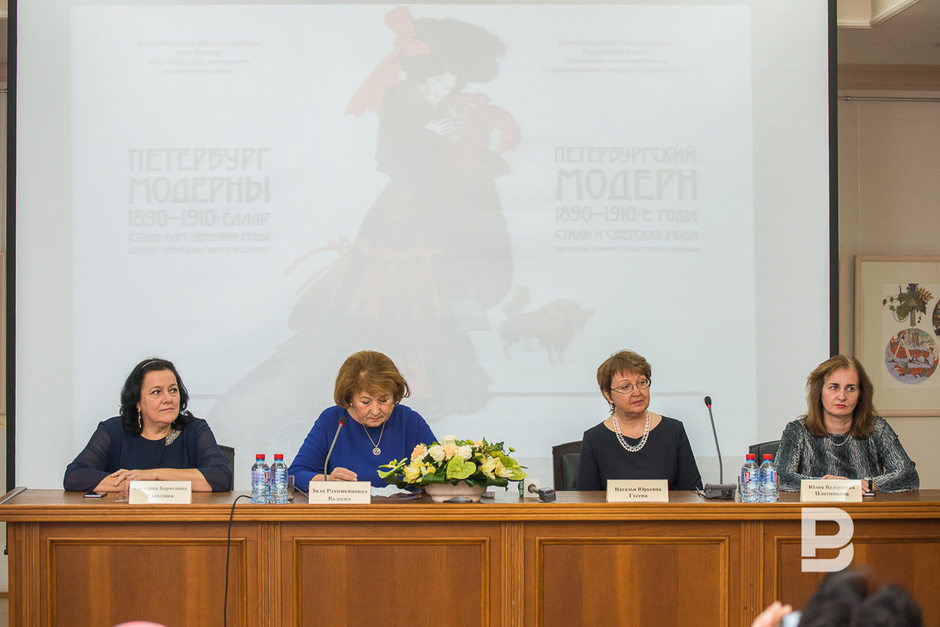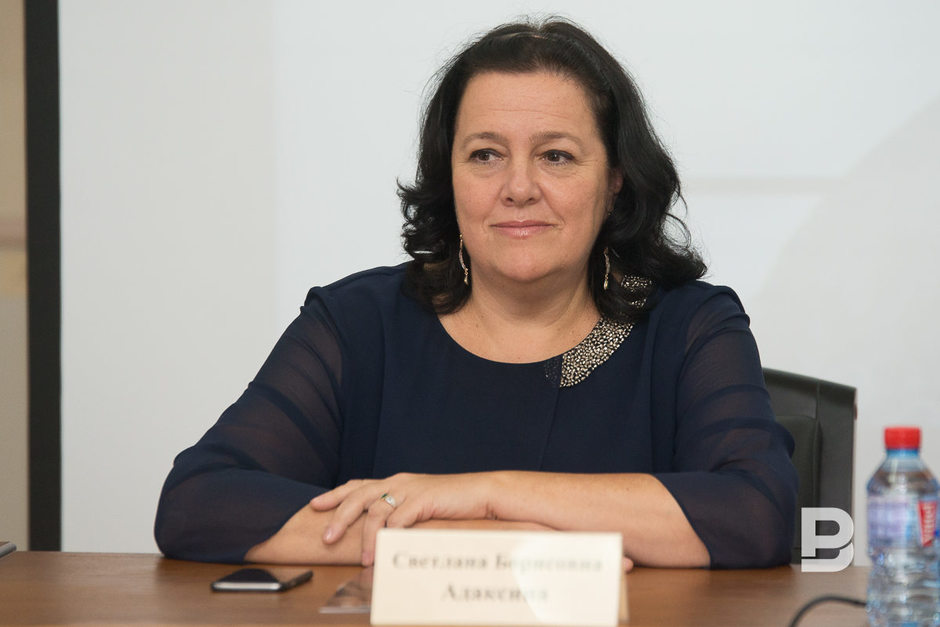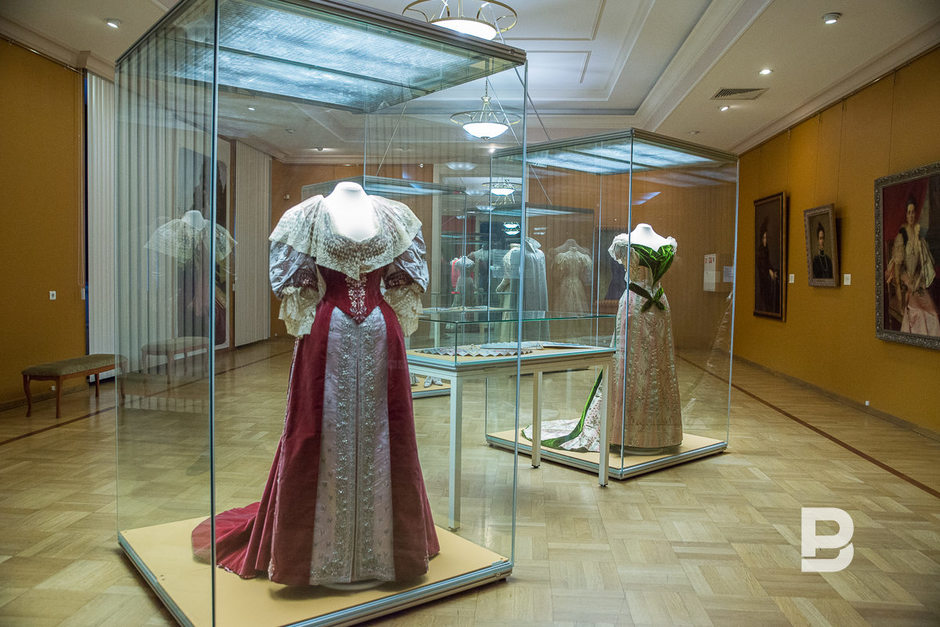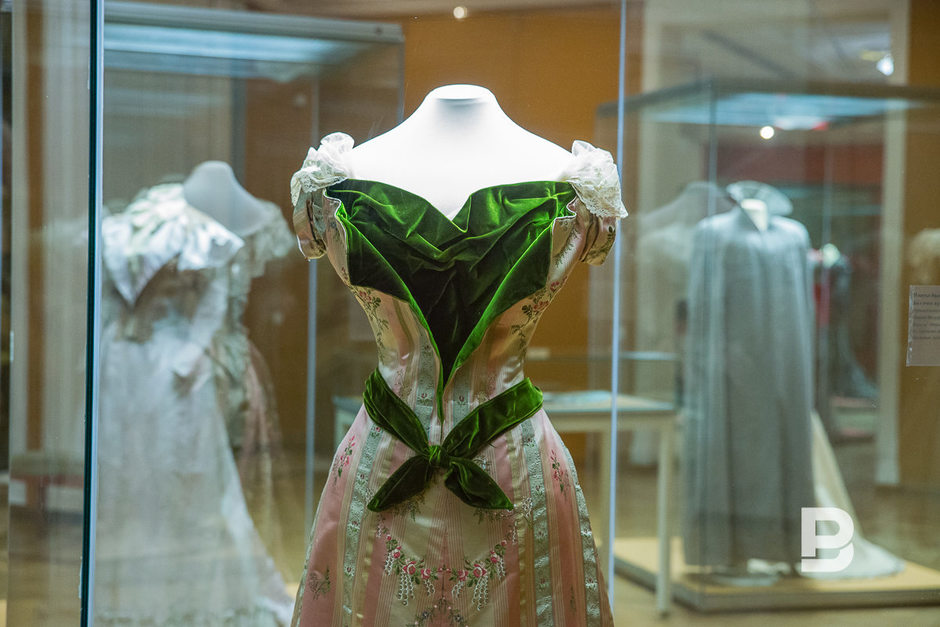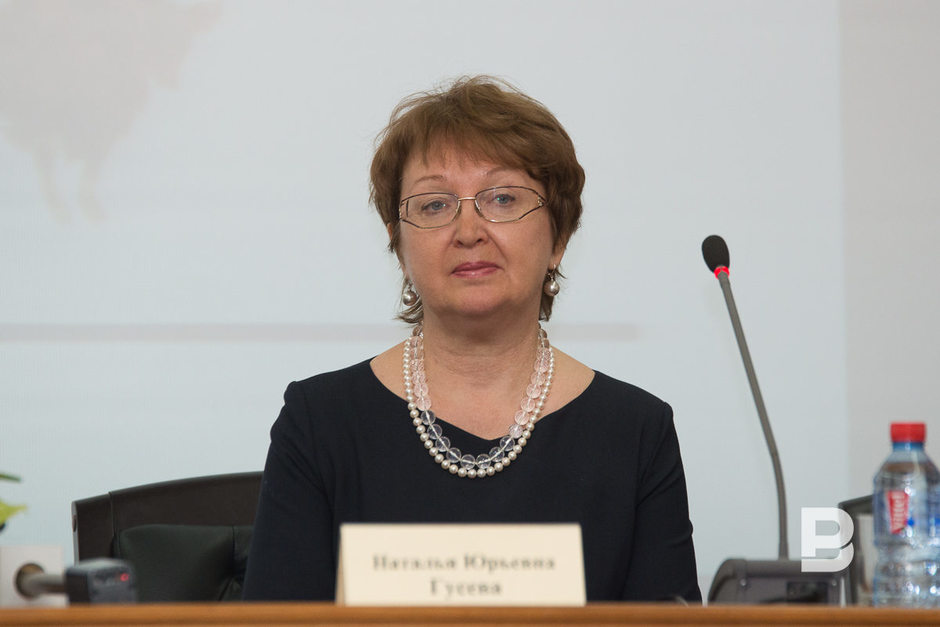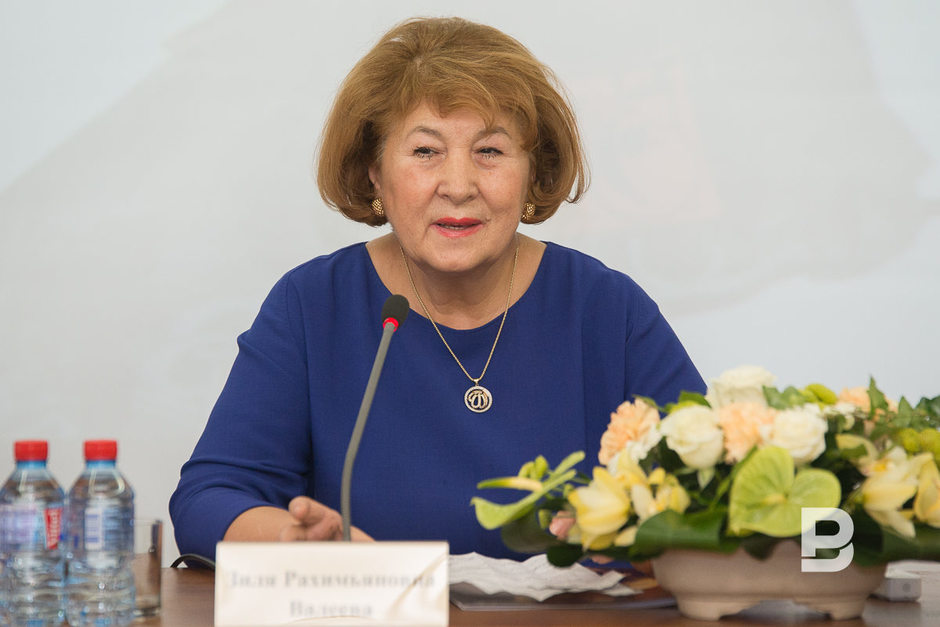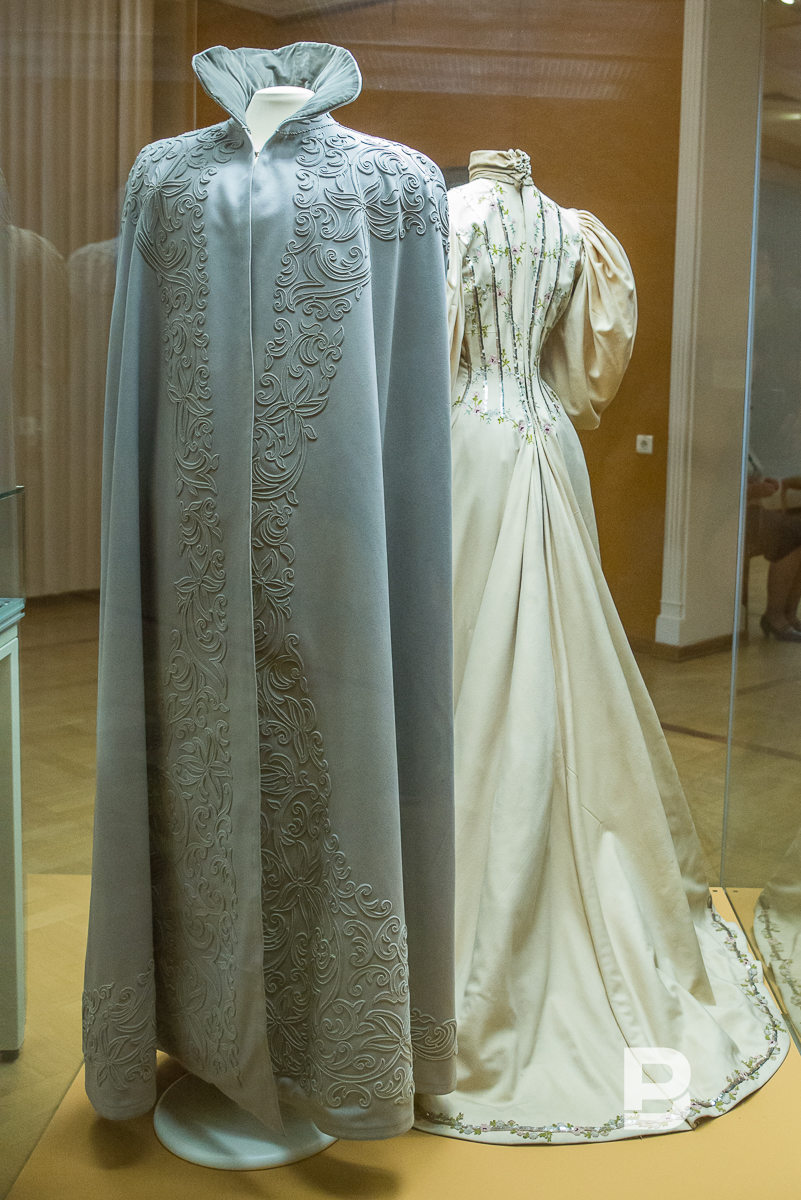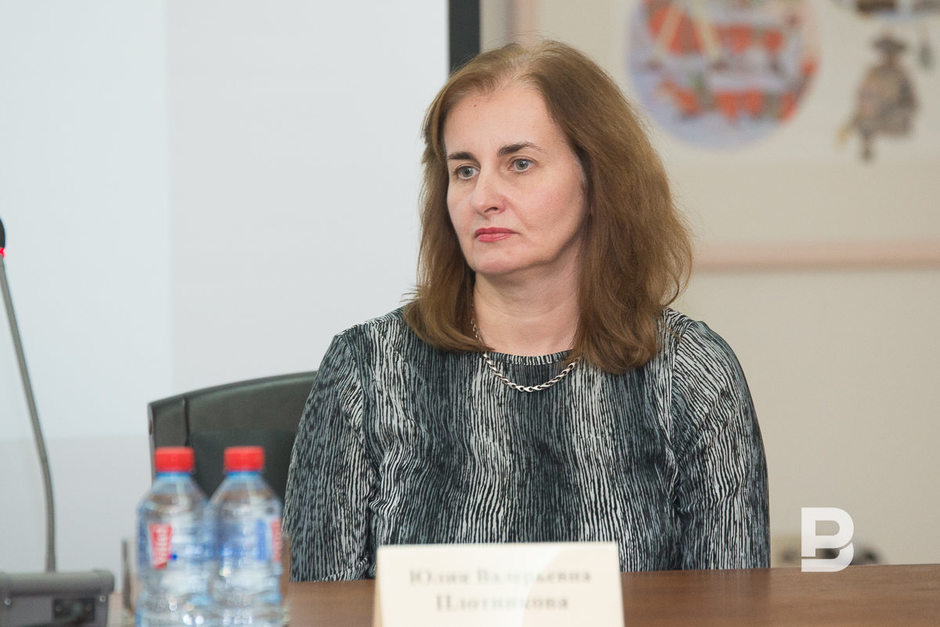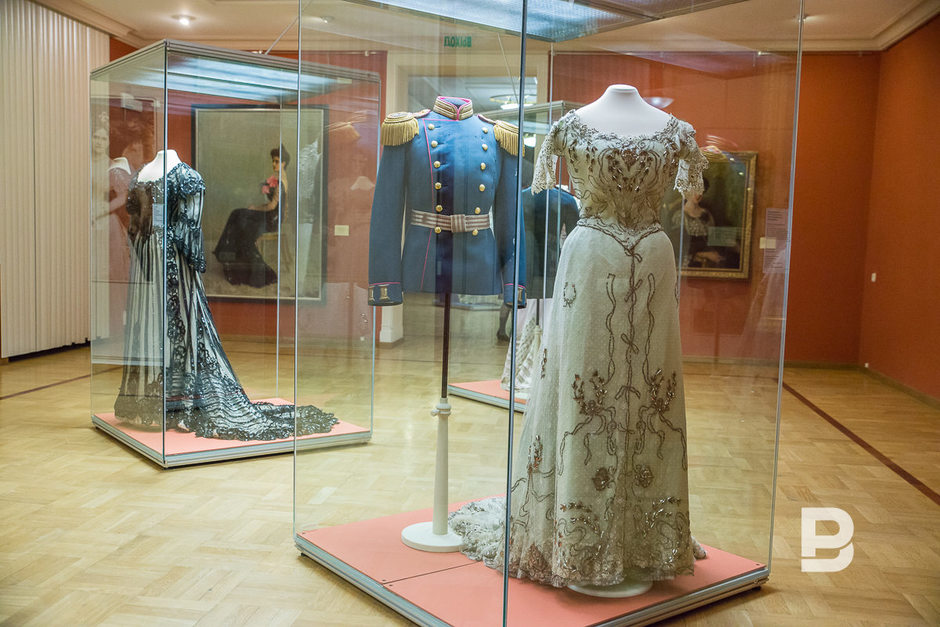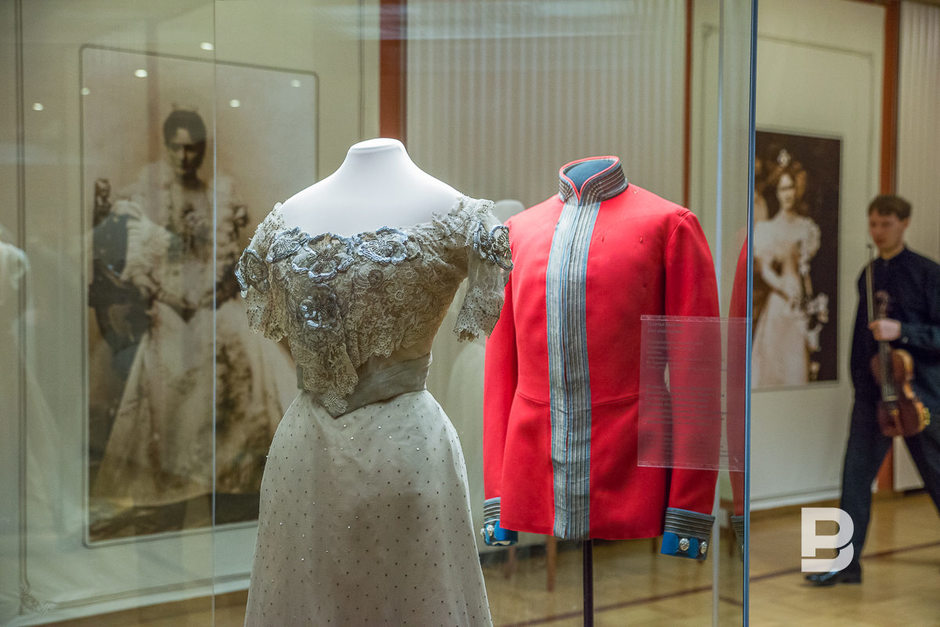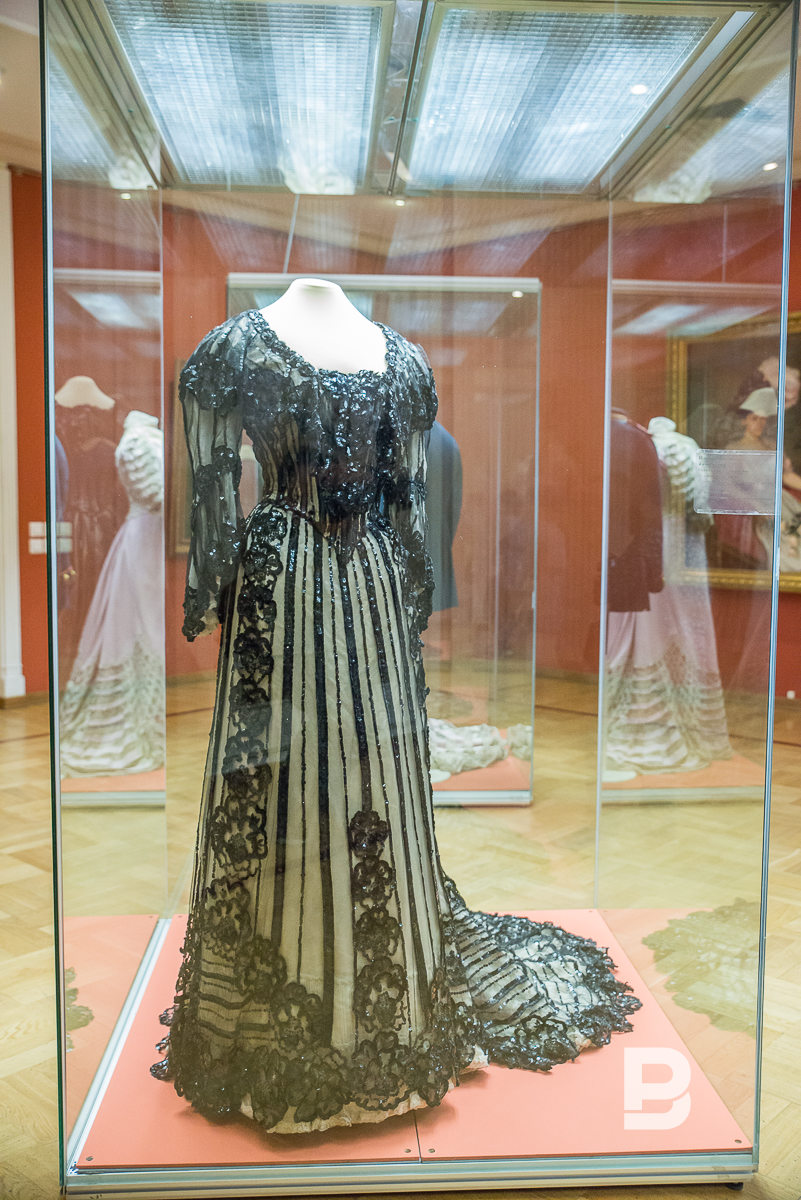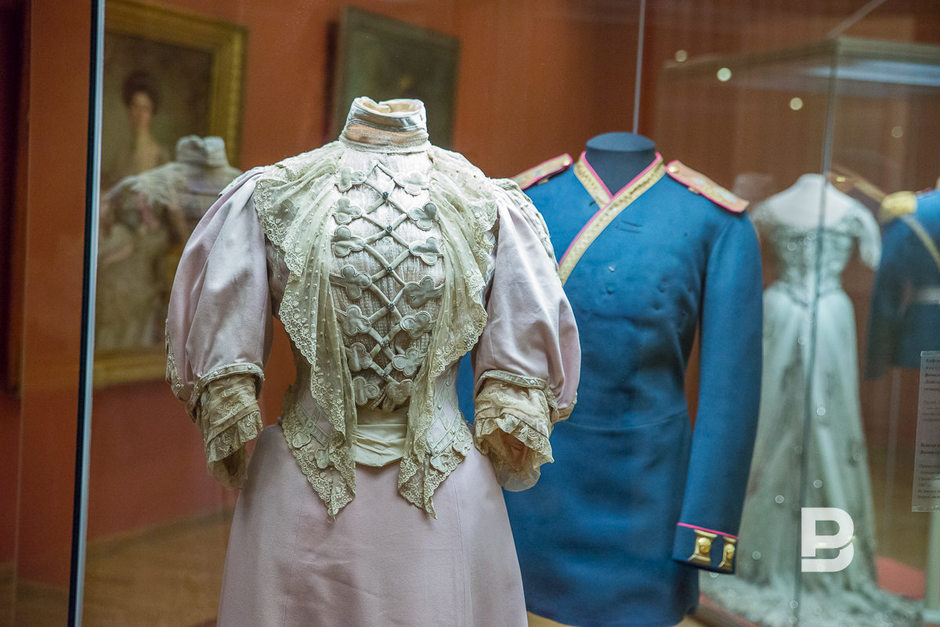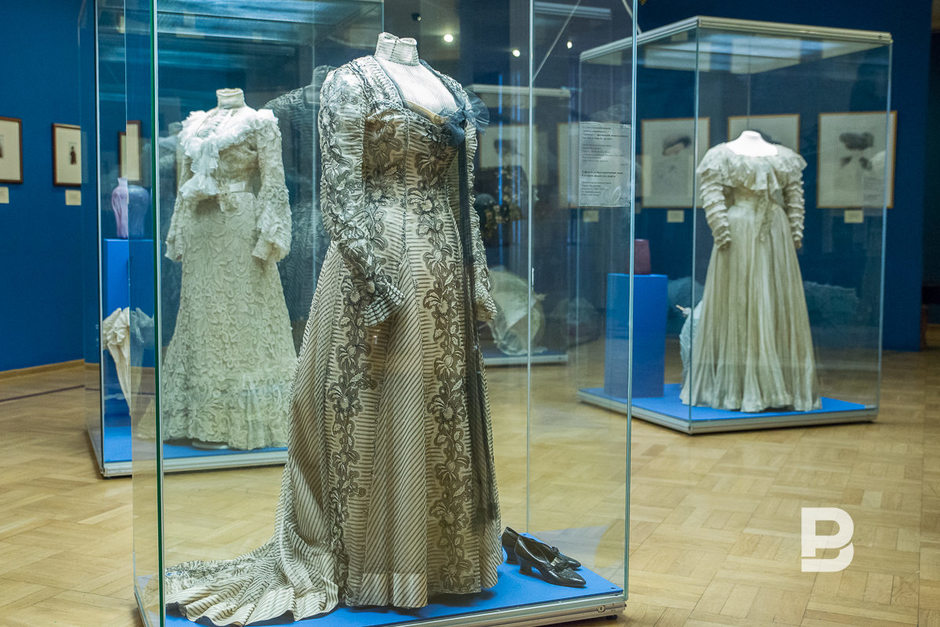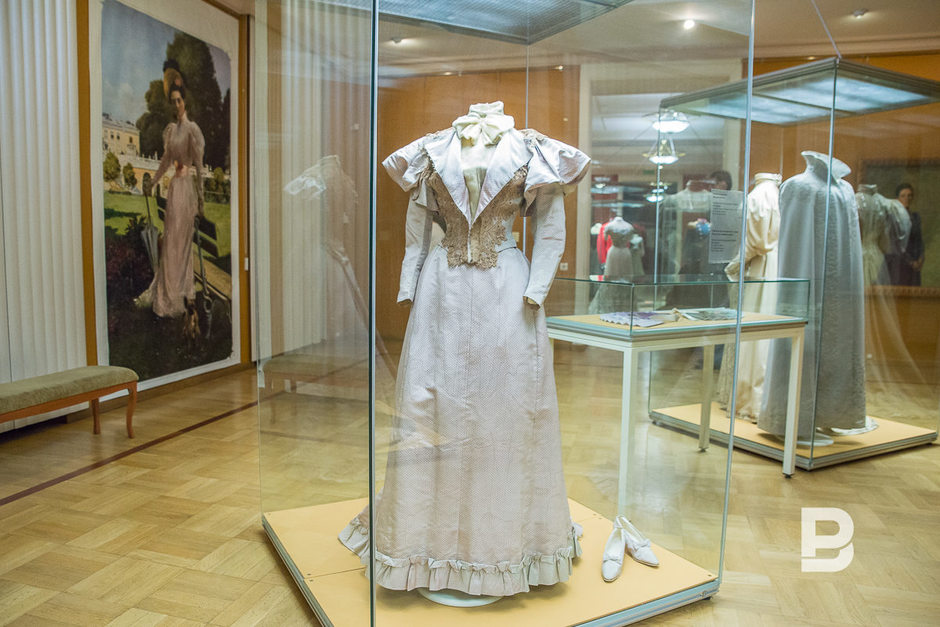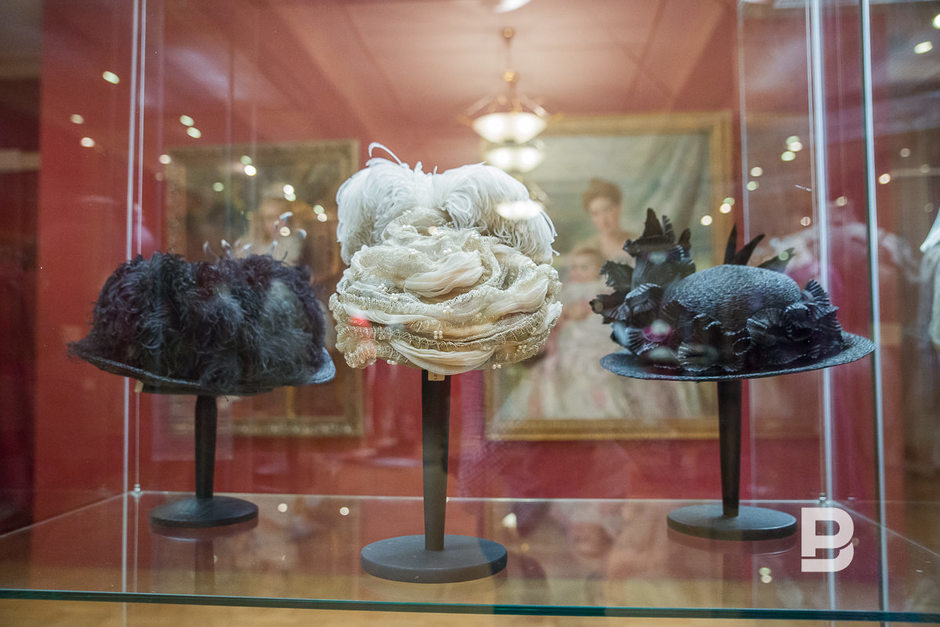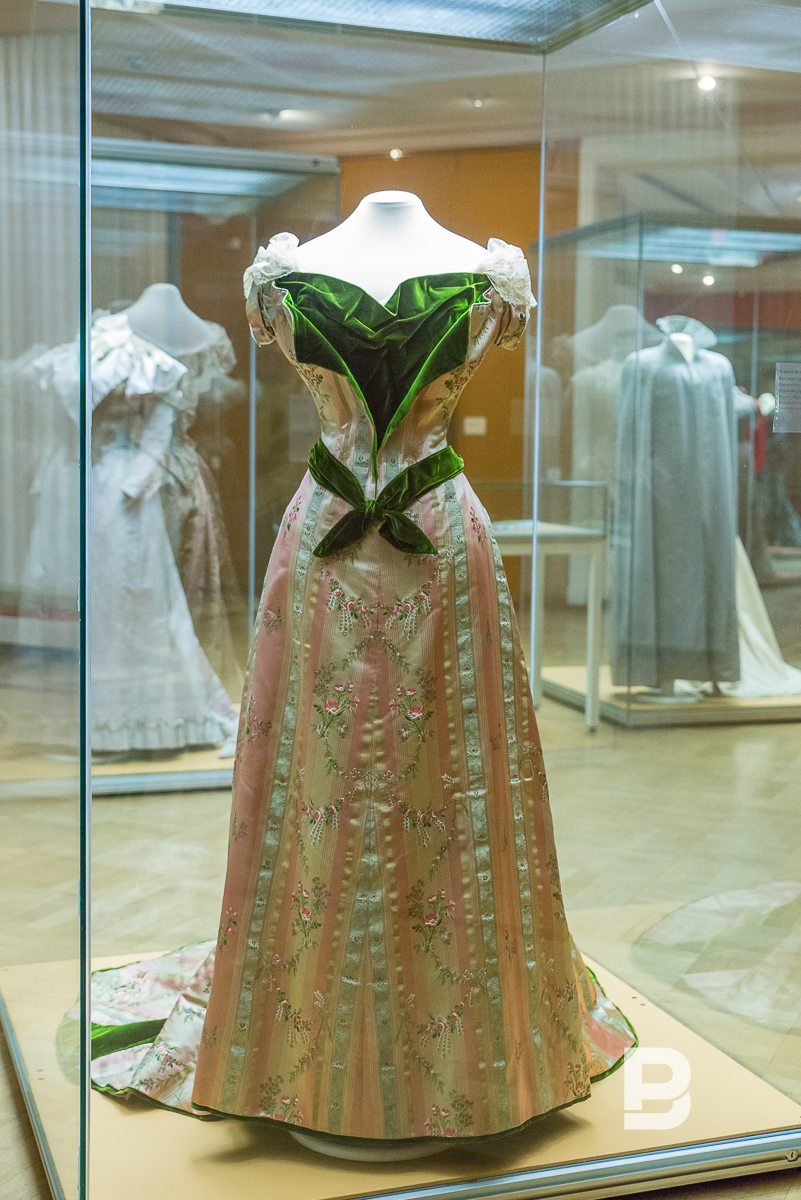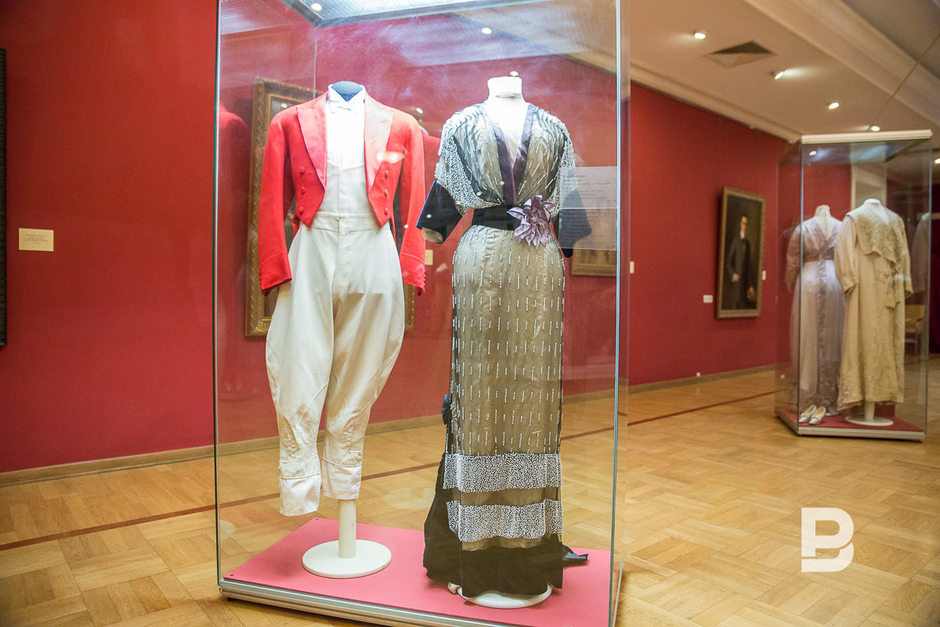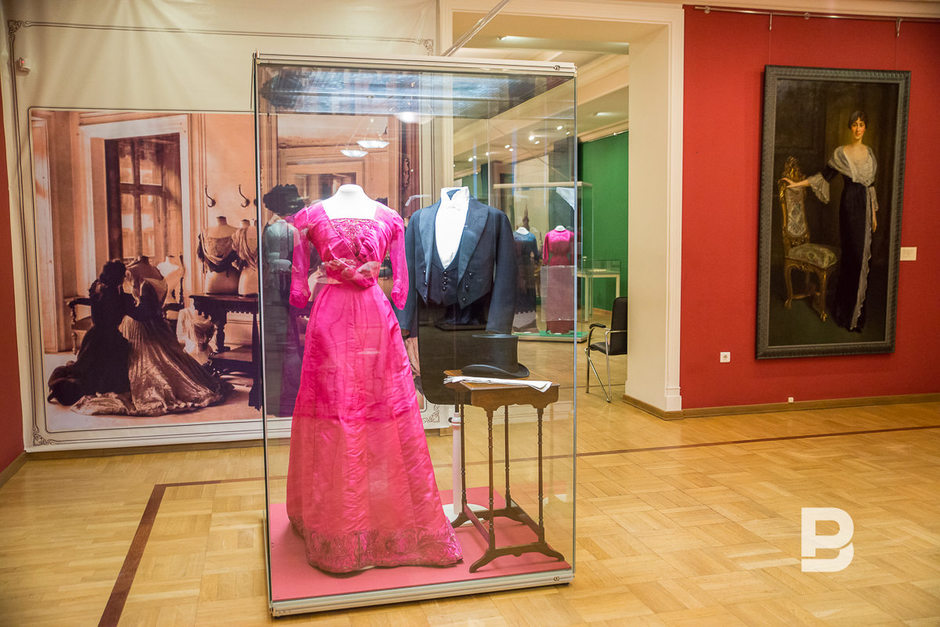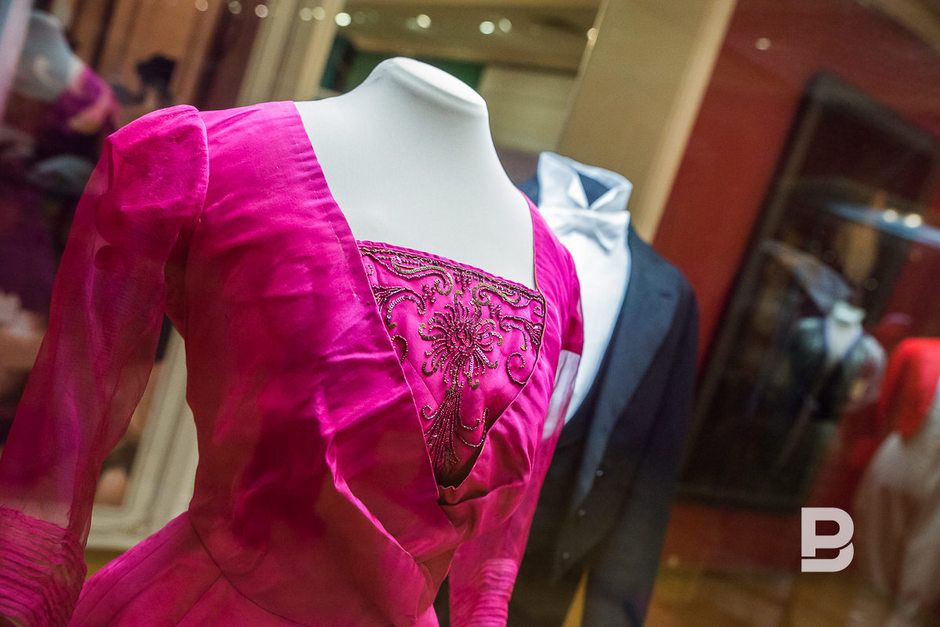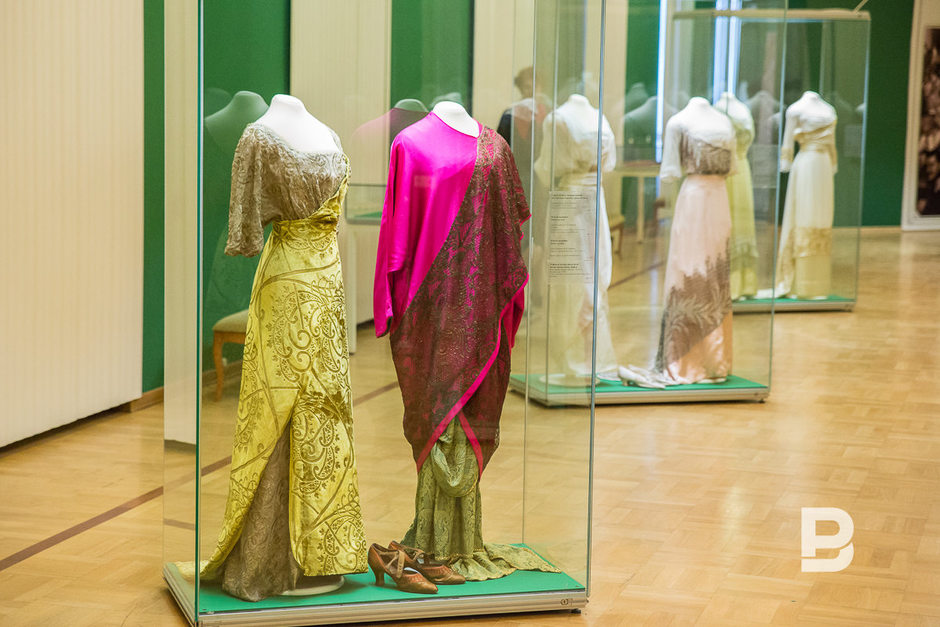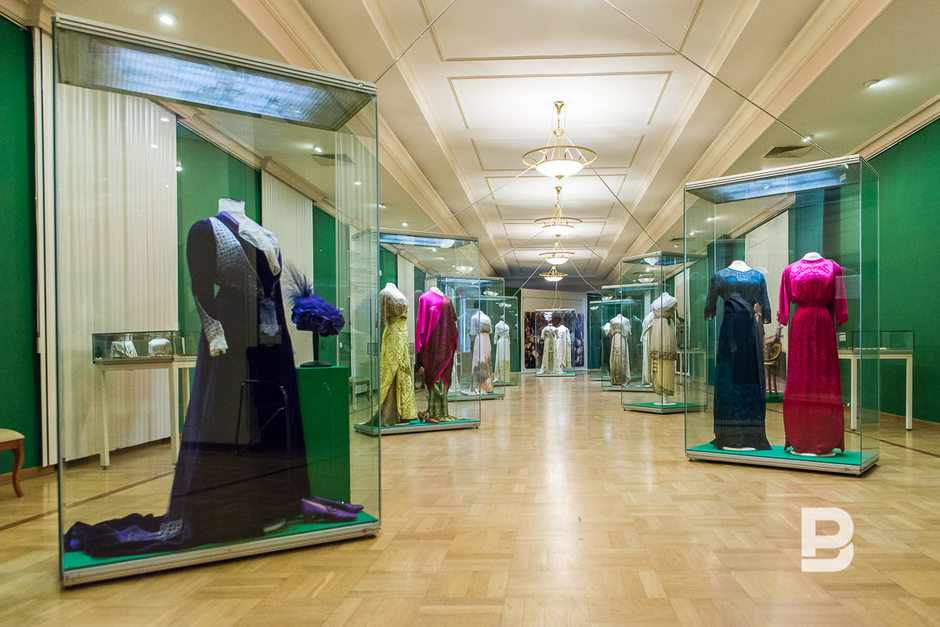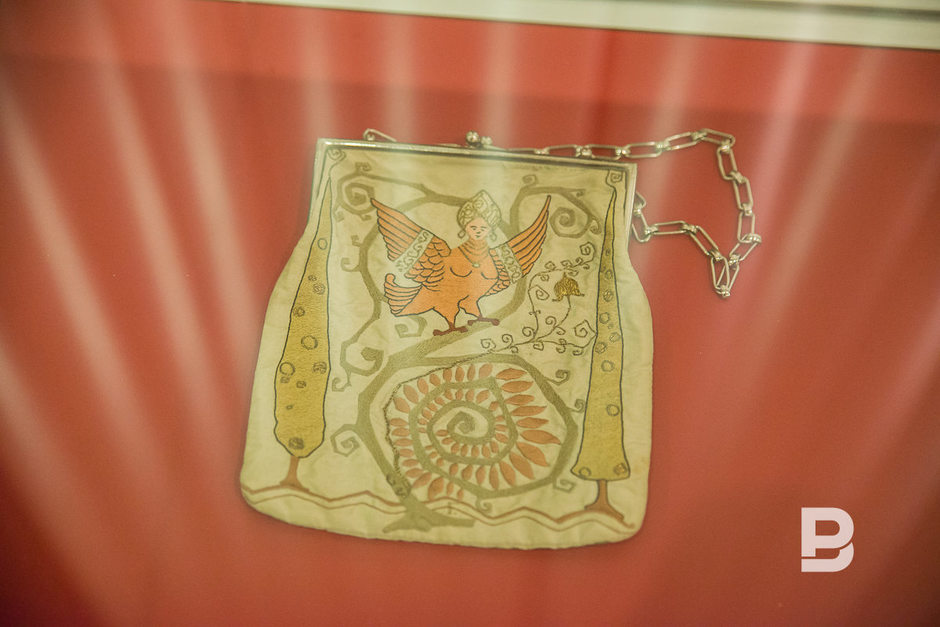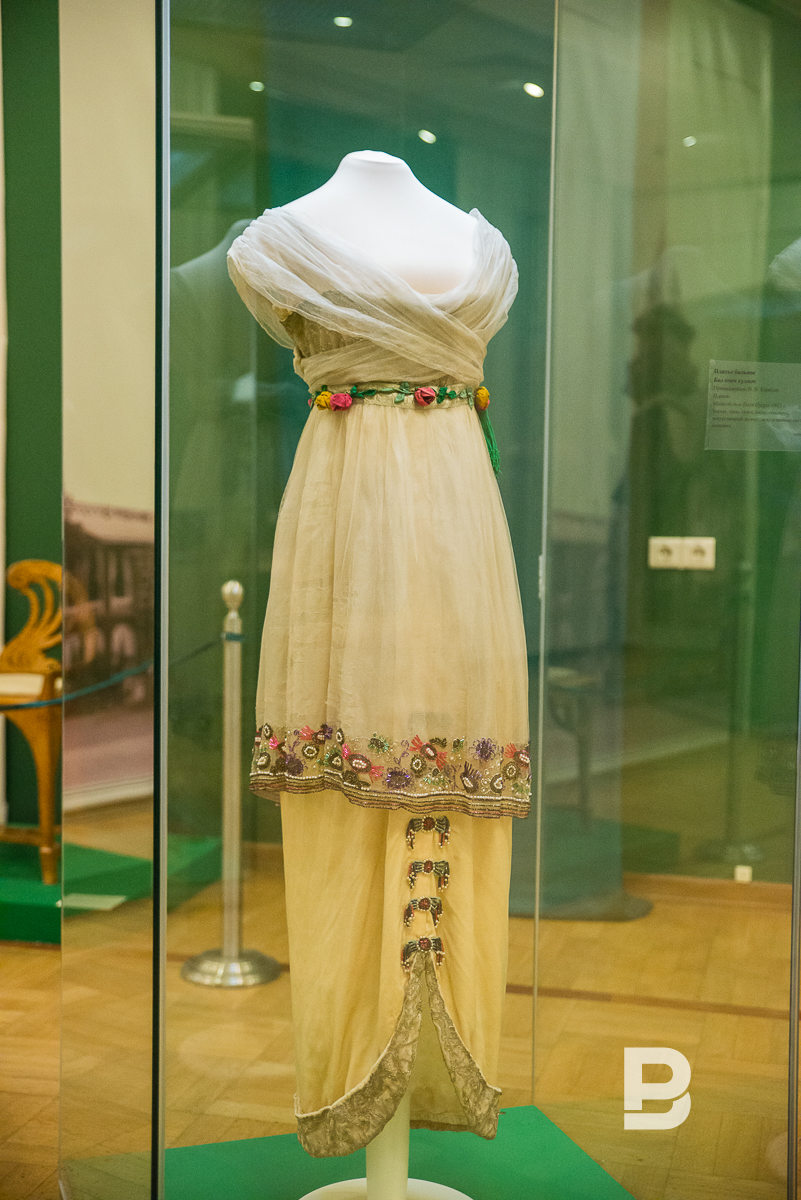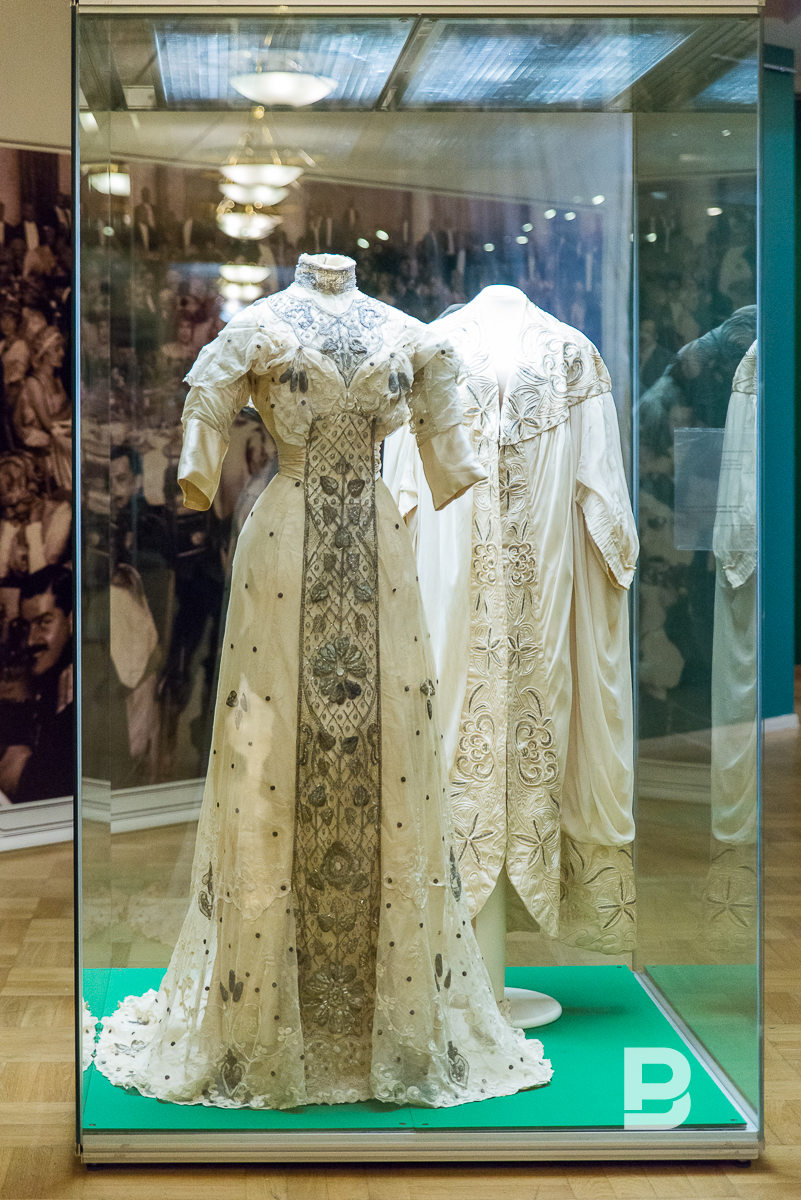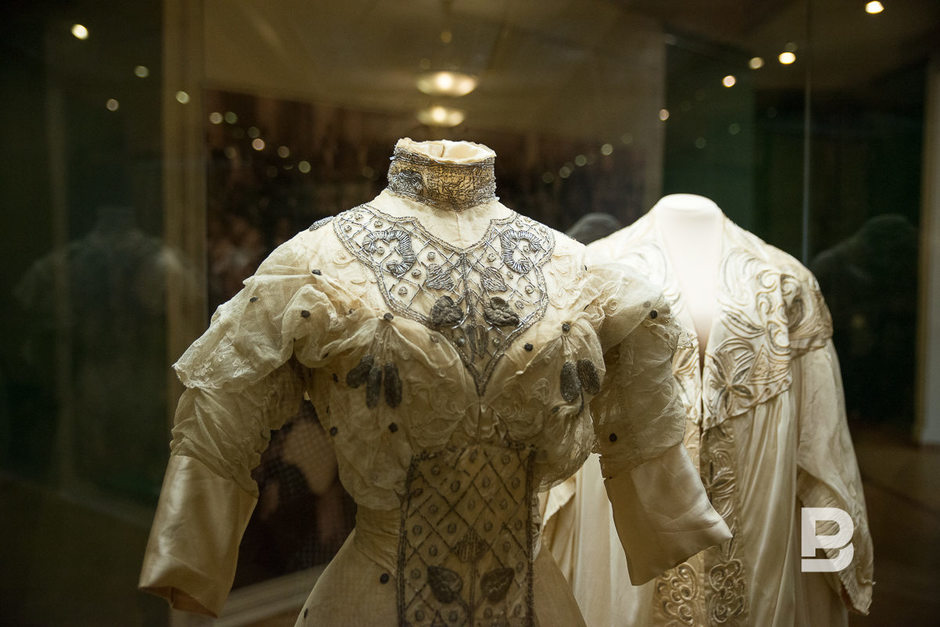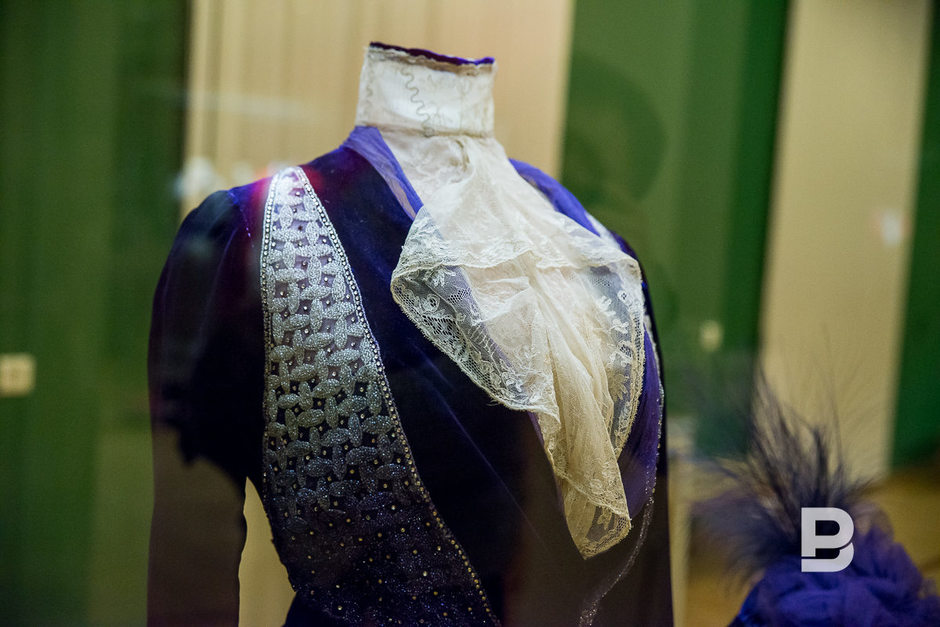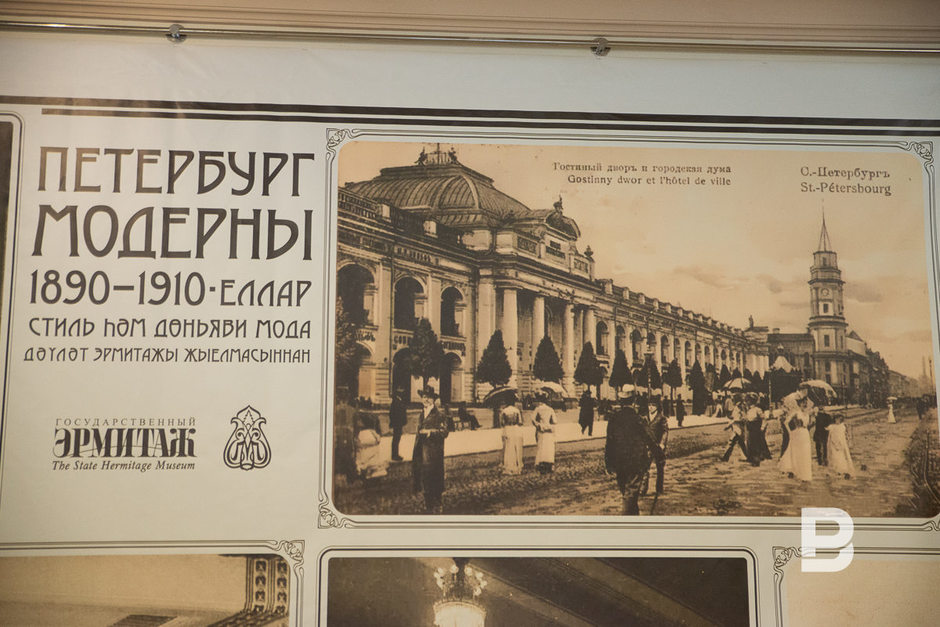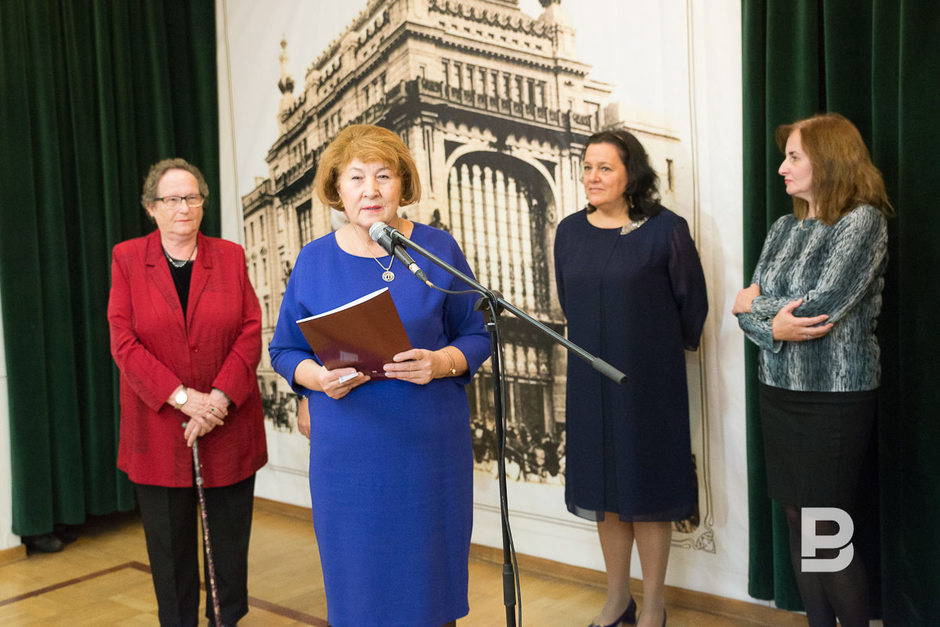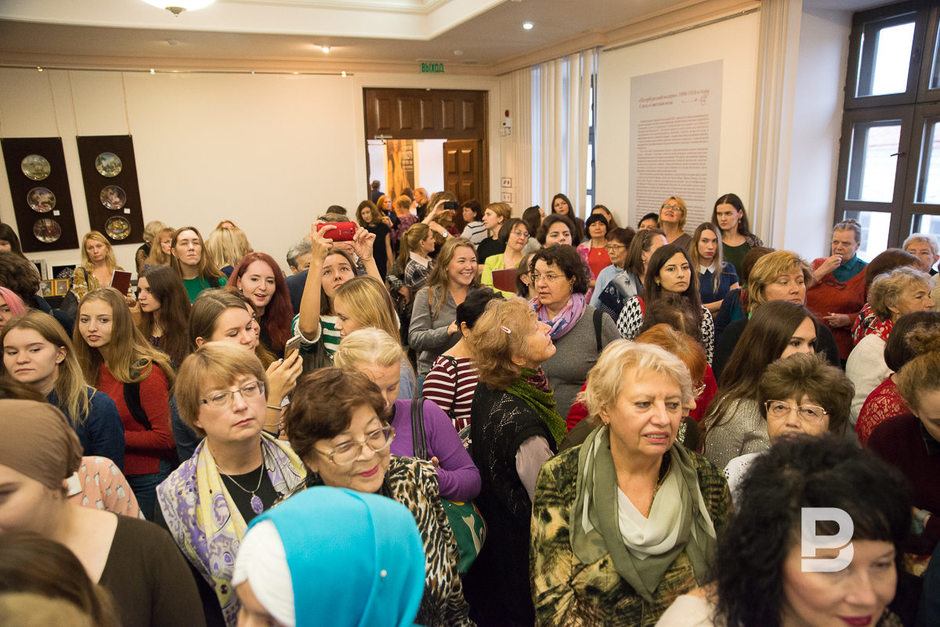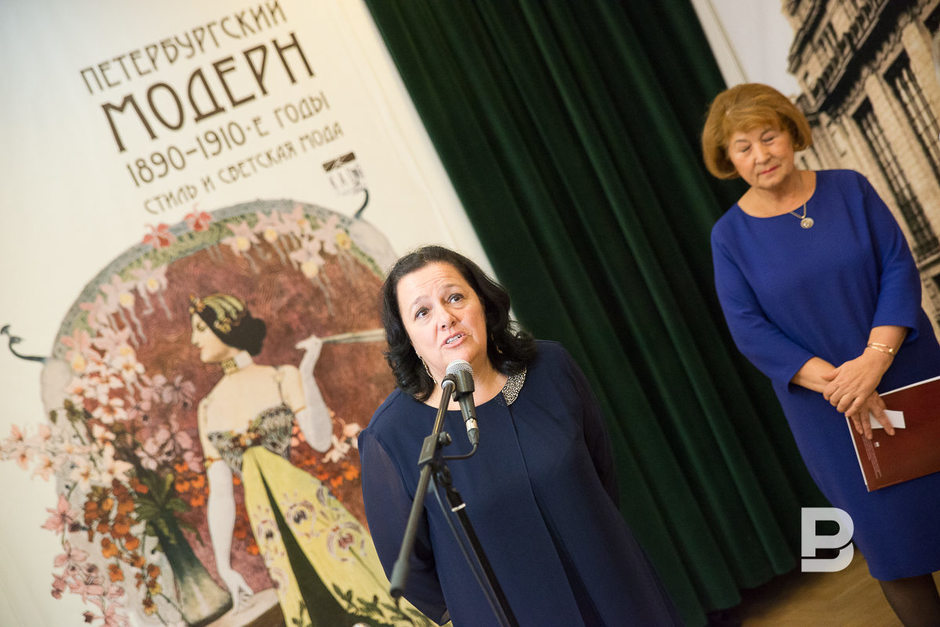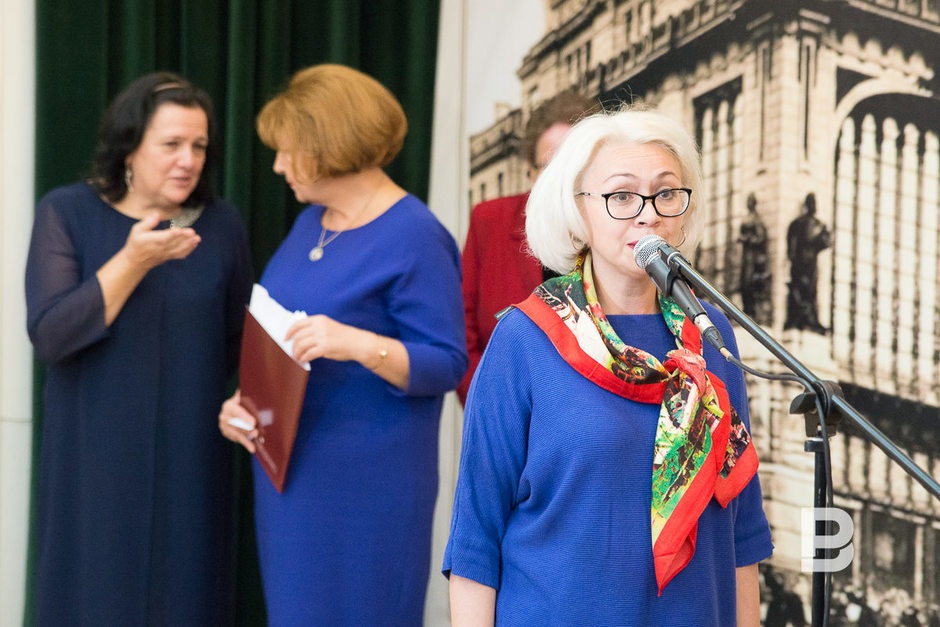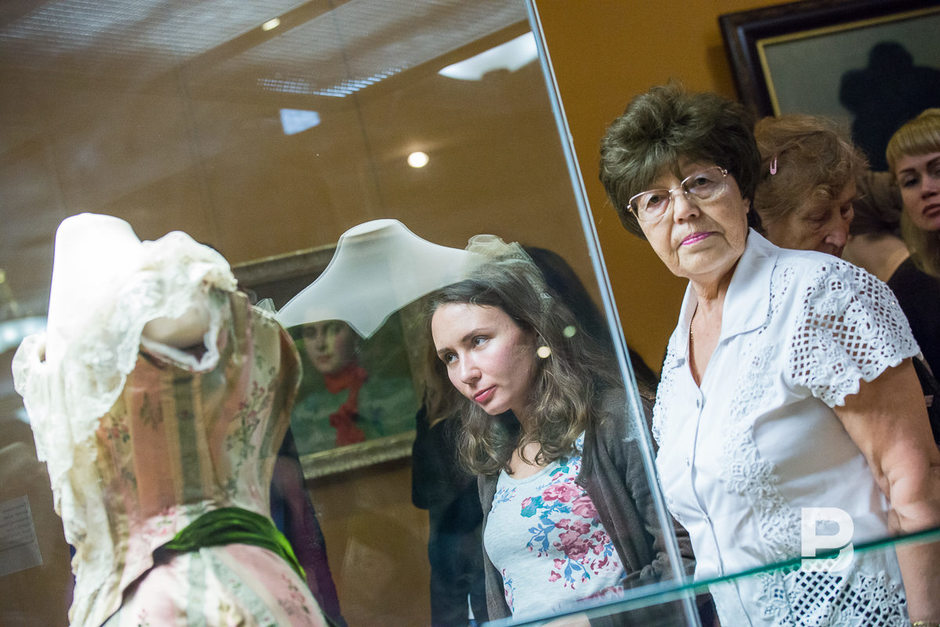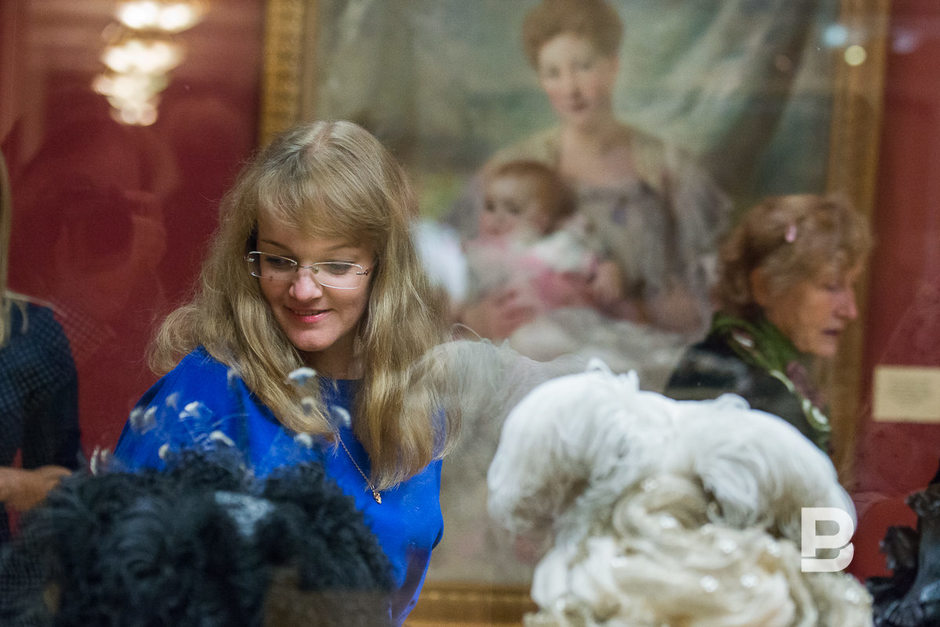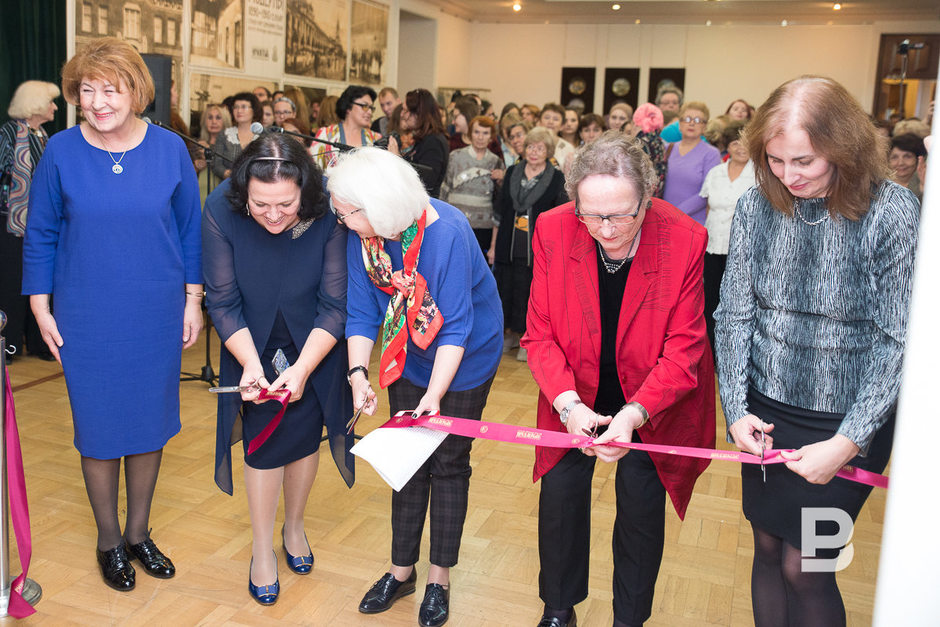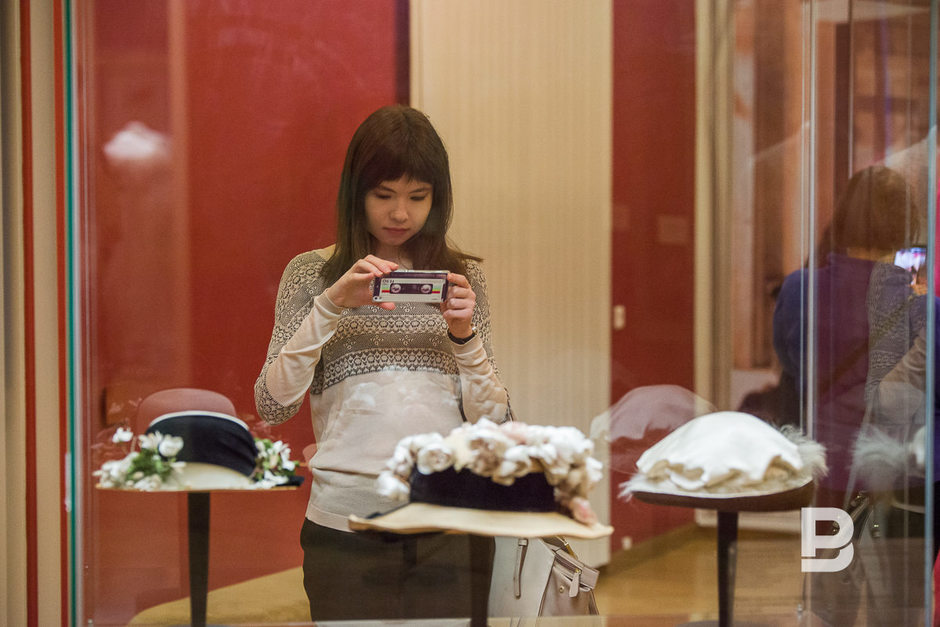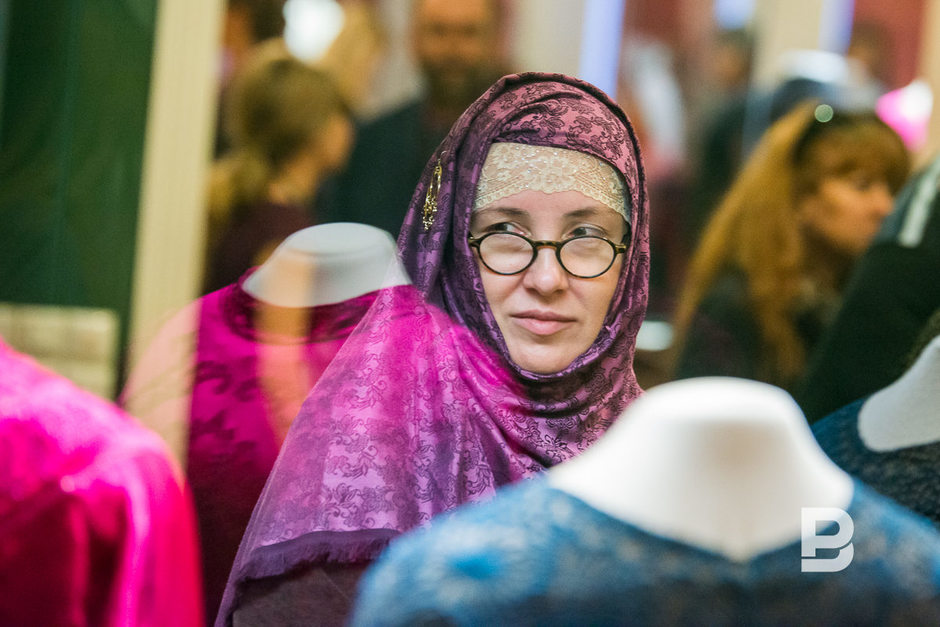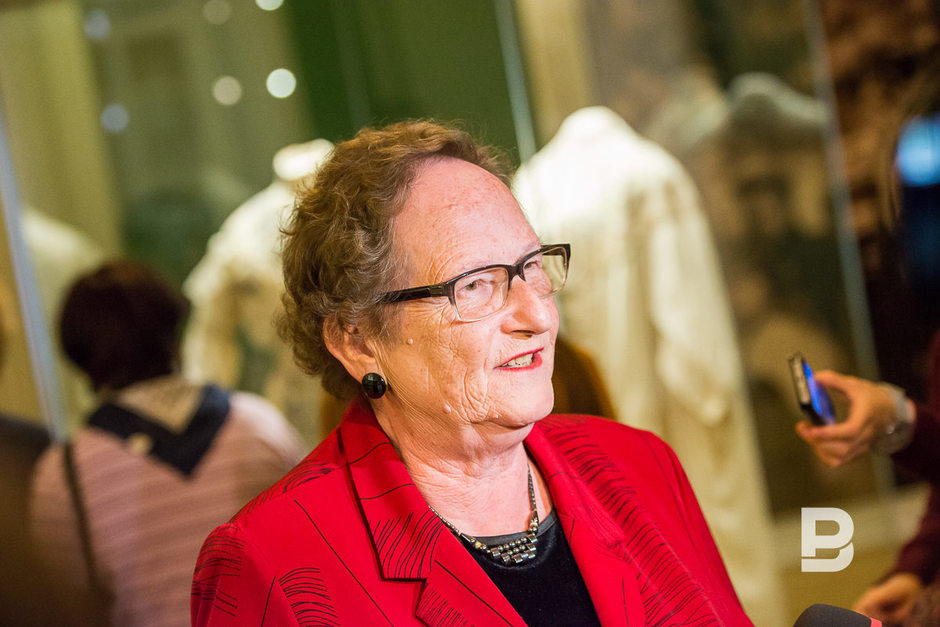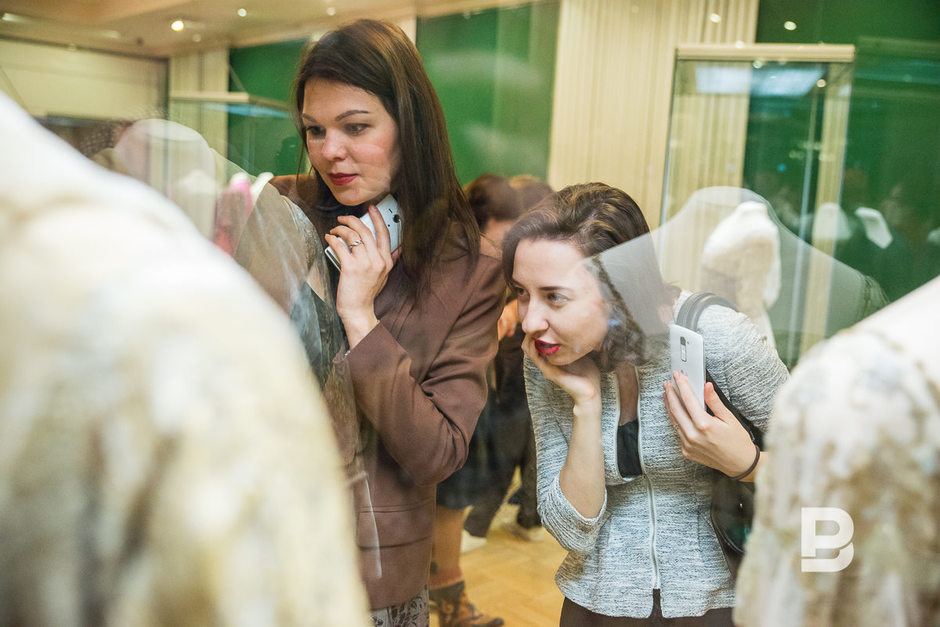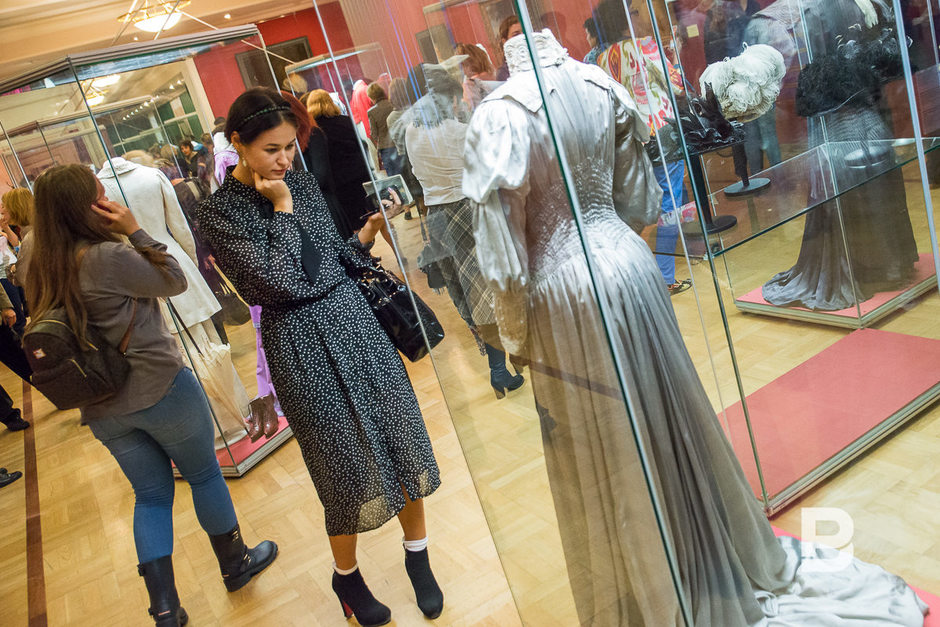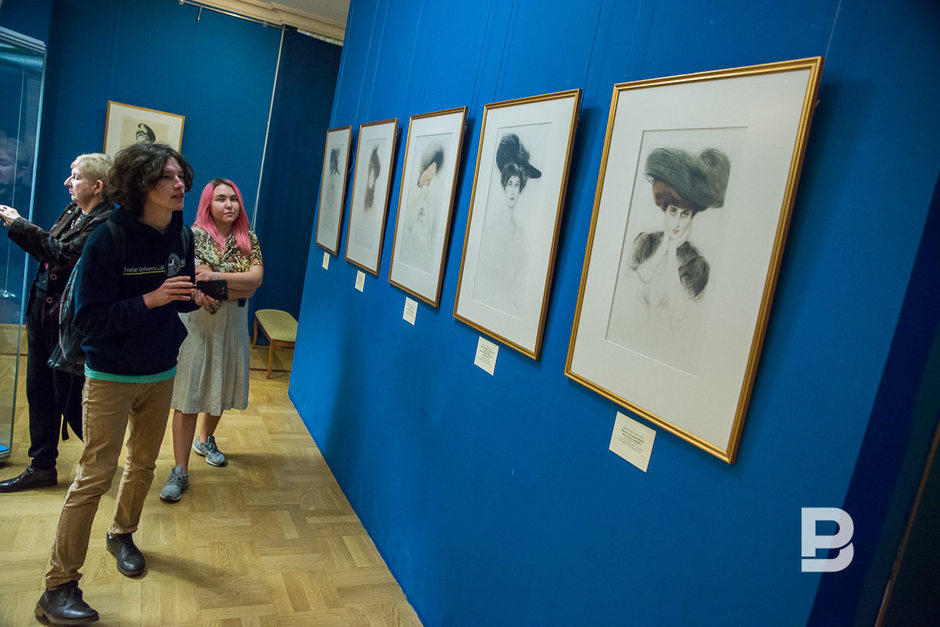What Syuyumbike’s descendants wore
Princess Zinaida Yusupova became the icon of a costume exhibition in Hermitage-Kazan
What clothes did Rasputin's murderer Prince Felix Yusupov wear? What colour did Empress Maria Fyodorovna prefer? What kind of umbrellas could exist? What uniform did Emperor Nikolay II like to wear? The answers to these questions can be found now in Hermitage-Kazan where an exhibition called Petersburg Art Nouveau. 1890–1910 years. Style and Secular Fashion is taking place. A correspondent of Realnoe Vremya visited the exhibition.
'Mother was amazing'
Now the Hermitage resembles a secular salon if not a ballroom. Women's tenderest dresses, fans embroidered with sequins, frivolous umbrellas, white ties and uniforms. Empresses Maria Fyodorovna and her daughter-in-law Aleksandra Fyodorovna, great Princess Olga, Princess Zinaida Yusupova, who was the richest woman and the most beautiful lady of Petersburg, wore them.
How fancifully the history shuffles the cards! Dresses of Syuyumbike's descendants are near the Syuyumbike Tower in the Kazan Kremlin. Remembering the history of his family, Prince Felix Yusupov wrote in his diaries: 'Yusuf had eight sons and a daughter Sumbeka (according to Prince Felix), the Kazan tsarina who was famous for her intelligence and beauty was passionate and brave… The Russian conquered Kazan, their excellence was indubitable. The Khanate of Kazan fell, Sumbeka surrendered… Not only Tsar Ivan was captivated by the captive. The famous tsarina captivated both boyars and the common people'.
Khan Yusuf was the originator of the Yusupovs who adopted Christianity in the 17 th century. Marrying Count Sumarokov-Elston, Zinaida Yusupova conserved the family surname as a memory of her famous respected ancestors. Many artists made a portrait of Princess Yusupova. A portrait painted by Valentin Serov who depicted the whole Yusupovs family is the most famous workpiece. Zinaida Yusupova's portrait by François Flameng that belongs to Felix Yusupov's collection is exhibited too.
The reproduction of this portrait became the poster of the exhibition – Zinaida Yusupova was the example, icon of style, so to speak. Let's have a look at Felix Yusupov's diaries. He wrote: 'Mother was amazing. She was tall, slim, elegant, swarthy and black-haired with eyes shining like stars'. Zinaida Yusupova's dress demonstrated on the exhibition proves its owner's perfect taste.

Not fussy silver and white combination of velvet and satin. And a violet silk flower in the waist is the detail that 'creates' the whole costume.
It should be reminded that costumes of the 20s are exhibited here. It is a period when the Russian Symbolism, which gave the world special interest in 'space abyss', 'sapphires and amethysts of blizzard' like one of the brightest representatives of the Russian Symbolism Aleksander Blok wrote about these colours, was the main artistic movement. A tender violet colour was frequently used in women's clothes.
Judging by her dress, Zinaida Yusupova was quite tall and had a slender waist. But her youngest son Felix had broad shoulders and was tall. His hunting outfit is also exhibited. And here dandy Prince Felix, this enfant terrible of high society, in other words, posh, who was not afraid to be against Grigory Rasputin and became one of the kindest people in emigration who saved his compatriots remains true to his principles. He hunted with dogs and had a fuschia white tie and white trousers on. What was behind it? Not only a scandalous behaviour but also a character.
By the way, in Paris, when he was in emigration, Prince Felix and his wife Irina (niece of the last Emperor) opened a fashion house IRFE, that is to say, Irina and Felix. They made up excellent collections but they were awful businesspeople. The fashion house did not justify itself in terms of money.
Violet worlds and old rose
The tender, womanly, a bit 'tired' Russian Art Nouveau is represented by absolutely different fashion houses. For example, there is dress created by Paul Poiret, Coco Chanel's predecessor. He freed women from the dictate of corset, made tunic trendy. But the most important thing is that Piret visited Moscow and later in Paris made a collection called Kazan. Moreover, he dressed not only ladies from the high society. For example, Mata Hari and Isadora Duncan were among his clients.

So Nadezhda Lamanova, the first Russian designer, is she second iconic name. Marina Tsvetaeva eternalised 'dresses by Lamanova' in her poems. Lamanova was meant to be the supplier of Her Imperial Majesty. And later, in 1925, she got Grand-Prix for her clothes in Paris. Nadezhda Lamanova's dresses mean a perfect fit, they like the second skin.
Lamanova also worked as a theatre designer, made costumes for the Moscow Art Theatre where very Stanislavsky invited her. Costumes for Grigory Aleksandrov's Circus are her most famous work. Lamanova passed away in October 1941 – she came to the theatre where she worked and she was to be evacuated with, but the only thing she saw was its doors. Her colleagues had gone without her. Nevertheless, Lamanova's dresses on the exhibition don't evoke sad thoughts – they are an image of joyful femininity, a desire to live and be beautiful.
All the dresses exhibited in the Hermitage have a difficult fit, for example, Empress Maria Fyodorovna's dress. Violet seems to be her favourite colour. This dress is a combination of different cloths– cashmere, silk, lace, adorned with soutache. Her granddaughter Princess Olga's nice hat stands next. It is a tender straw hat with roses. It is terrible to imagine what a tragic fate was expecting its owner in several years…
According to Empress Aleksandra Fyodorovna, she was a handsome woman. Her collection consists of several dresses – for balls, receptions, with a train covered in sequins and beads. The colours resemble an old rose. Emperor Nikolay II's uniform is the next exhibit. It is made of an aquamarine close cloth.

Fans, which don't repeat, and umbrellas are another story. Every umbrella is a workpiece. For example, probably the black umbrella embroidered with bright colour revived a dull day. But people often used umbrellas to hide from the sun, not rain.
It goes without saying, clothes, their choice according to the fashion was an important part of the life of aristocratic Petersburg. The Russian nobility was a connoisseur of beautiful clothes. People who emigrated dealt with fashion houses for a reason. For example, Coco Chanel's boyfriend great Prince Dmitry made her create perfume. And the world has been sniffing the sour aroma of the iconic No. 5 until now. And her sister Maria served in Chanel's fashion house where she skilfully made embroideries for costumes. A great number of Russian noble women worked as models.
150 exhibits on the new exhibition in Hermitage-Kazan are 150 stories, love, passion, mistakes, happy moments. It is a piece of the past world, which has gone forever. This world is extremely careless where people 'talked' with fans, women had slender waists, while men knew how to wear not only a military uniform but also a secular dress. It is the world where 'silks anxiously rustled' and a black rose was sent to glasses of AI, which was golden like the sky.
